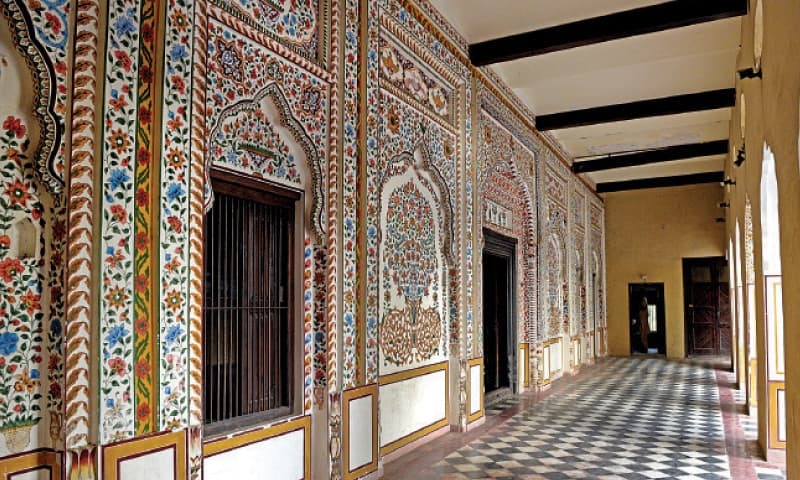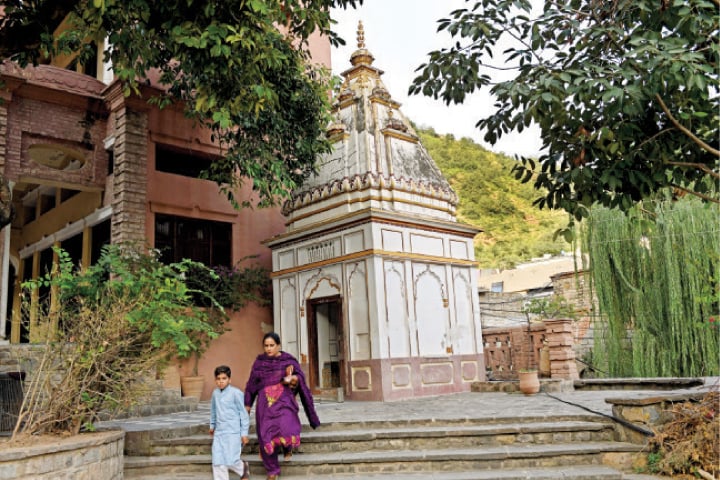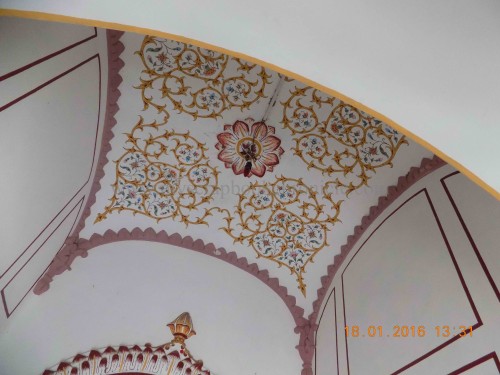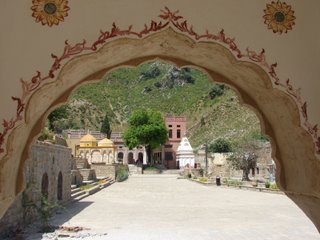ghazi52
PDF THINK TANK: ANALYST

- Joined
- Mar 21, 2007
- Messages
- 102,926
- Reaction score
- 106
- Country
- Location
‘Saidpur’s temple’

The veranda of the temple building, renovated by the CDA, speaks of the history of the twin cities.
One of the tourist attractions in Saidpur Village, a historic village in the Margalla Hills, is an old temple known as Ram Mandir. Said to have been built by Raja Man Singh, who was close to the Mughal emperor Akbar, the temple has not been used as a place of worship since 1947.
According to the Rawalpindi Gazetteer 1893-94, a fair was held at Ram Kund, a pond in Saidpur, every year, visited by Hindus from the area.
But in 1960, after the federal capital was moved from Karachi to Islamabad, the temple building was used to house a girls’ school for the villagers. In 2006, the Capital Development Authority (CDA) had the building vacated and preserved as a tourist attraction.

The renovated dharamshala building in Saidpur Village.
But the local Hindu community has criticised the move, saying restaurants that have opened on the once holy premises as well as the tourists who flock to the area have violated the sanctity of the site, by roaming around the area wearing shoes.
“Lord Ram, his wife Sita and his brother Lakshman arrived in the Margalla Hills during their 14-year exile and stayed in this village and drank the water from the pond. Ram went to Swat, to Ram Takht, and spent some time in the Saidpur village area when he was returning to his home town,” explained Jag Mohan Arora, a representative of the Hindu community of the twin cities.

The centuries old temple in Saidpur Village, Islamabad.
After Ram left, he said, people preserved the pond, which is called Ram Kund. “There are three ponds – Ram Kund, Sita Kund and Lakshman Kund. But after the CDA’s renovations the ponds were not preserved and were built over and handed over to restaurants where people are being served meat dishes, which is a disgrace to the sanctity of a sacred place for Hindus,” he said.
Mr Arora said: “It is a religious site for Hindus and Sikhs in the area. The dharamshala and the temple, which is called the Shwala building, are visible.”

An old boodhi tree, commonly known as a Peepal tree, is an essential part of the temple and gurdwara.
Mr Arora is from Rawalpindi, and his family lived in Pakistan before partition. He said his father Manohar Lal and his uncle Krishan Lal went to Ram Mandir before partition, travelling from Rawalpindi on a tonga every week.

The veranda of the temple building, renovated by the CDA, speaks of the history of the twin cities.
One of the tourist attractions in Saidpur Village, a historic village in the Margalla Hills, is an old temple known as Ram Mandir. Said to have been built by Raja Man Singh, who was close to the Mughal emperor Akbar, the temple has not been used as a place of worship since 1947.
According to the Rawalpindi Gazetteer 1893-94, a fair was held at Ram Kund, a pond in Saidpur, every year, visited by Hindus from the area.
But in 1960, after the federal capital was moved from Karachi to Islamabad, the temple building was used to house a girls’ school for the villagers. In 2006, the Capital Development Authority (CDA) had the building vacated and preserved as a tourist attraction.

The renovated dharamshala building in Saidpur Village.
But the local Hindu community has criticised the move, saying restaurants that have opened on the once holy premises as well as the tourists who flock to the area have violated the sanctity of the site, by roaming around the area wearing shoes.
“Lord Ram, his wife Sita and his brother Lakshman arrived in the Margalla Hills during their 14-year exile and stayed in this village and drank the water from the pond. Ram went to Swat, to Ram Takht, and spent some time in the Saidpur village area when he was returning to his home town,” explained Jag Mohan Arora, a representative of the Hindu community of the twin cities.

The centuries old temple in Saidpur Village, Islamabad.
After Ram left, he said, people preserved the pond, which is called Ram Kund. “There are three ponds – Ram Kund, Sita Kund and Lakshman Kund. But after the CDA’s renovations the ponds were not preserved and were built over and handed over to restaurants where people are being served meat dishes, which is a disgrace to the sanctity of a sacred place for Hindus,” he said.
Mr Arora said: “It is a religious site for Hindus and Sikhs in the area. The dharamshala and the temple, which is called the Shwala building, are visible.”

An old boodhi tree, commonly known as a Peepal tree, is an essential part of the temple and gurdwara.
Mr Arora is from Rawalpindi, and his family lived in Pakistan before partition. He said his father Manohar Lal and his uncle Krishan Lal went to Ram Mandir before partition, travelling from Rawalpindi on a tonga every week.











